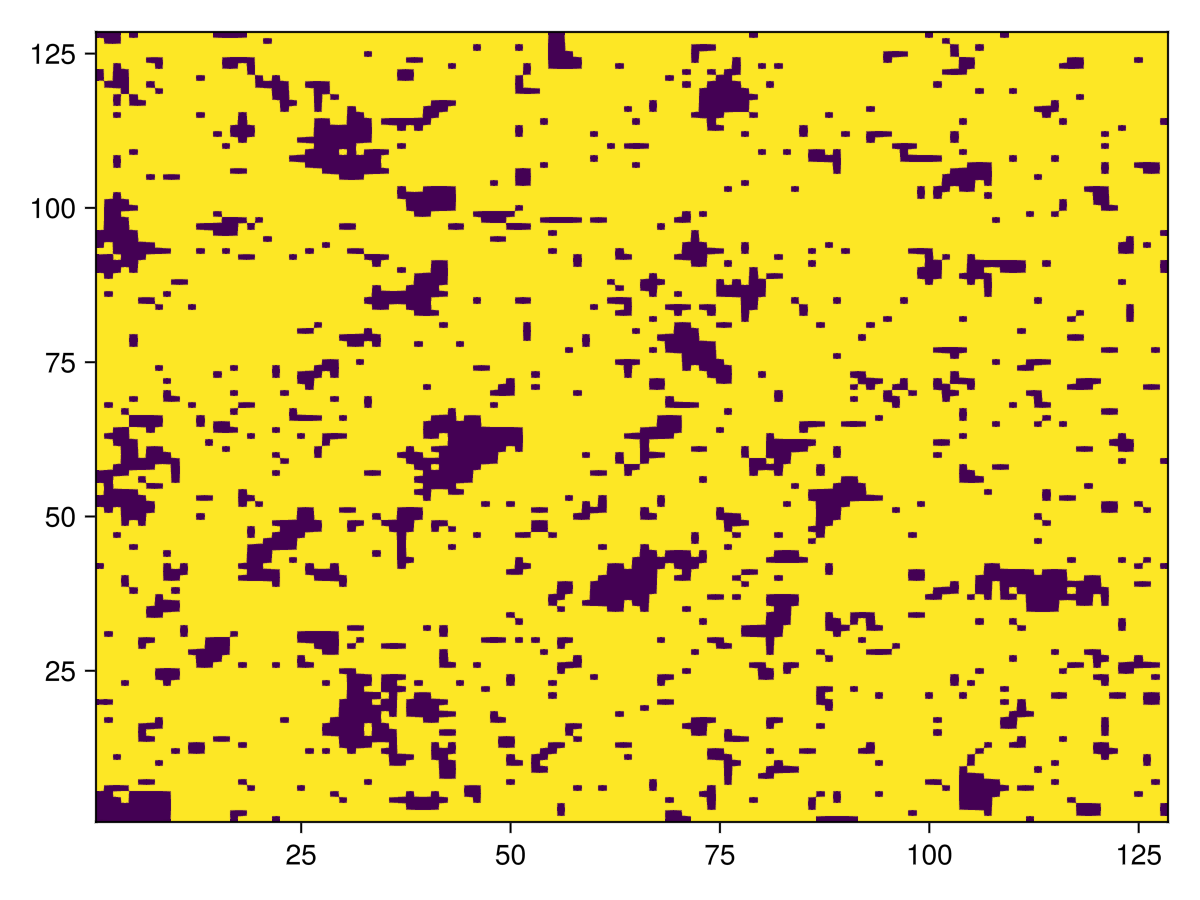Download this example as Julia file or Jupyter notebook.
5. Monte Carlo sampling of the Ising model
This tutorial illustrates simulation of the classical 2D Ising model.
using Sunny, GLMakieTo model the 2D square lattice, create an elongated tetragonal cell with one atom.
latvecs = lattice_vectors(1, 1, 10, 90, 90, 90)
crystal = Crystal(latvecs, [[0, 0, 0]])Crystal
Spacegroup 'P 4/m m m' (123)
Lattice params a=1, b=1, c=10, α=90°, β=90°, γ=90°
Cell volume 10
Wyckoff 1a (site sym. '4/mmm'):
1. [0, 0, 0]
Create a System of spin dipoles. Following the Ising convention, we will restrict the dipoles to $±1$ along the global $\hat{z}$-axis. Select $g=-1$ so that the Zeeman coupling between external field $𝐁$ and spin dipole $𝐒$ is $-𝐁⋅𝐒$. The system size is 128×128.
L = 128
sys = System(crystal, [1 => Moment(s=1, g=-1)], :dipole; dims=(L, L, 1))
polarize_spins!(sys, (0, 0, 1))Use set_exchange! to include a ferromagnetic Heisenberg interaction along nearest-neighbor bonds. The Bond below connects two spins displaced by the lattice vector $𝐚₁$. This interaction will be propagated to all nearest-neighbors bonds in the system, consistent with the symmetries of the square lattice.
set_exchange!(sys, -1.0, Bond(1, 1, (1, 0, 0)))If an external field is desired, it can be set using set_field!.
B = 0
set_field!(sys, (0, 0, B))The critical temperature for the Ising model is known analytically.
Tc = 2/log(1+√2)2.269185314213022Use a LocalSampler to perform nsweeps Monte Carlo sweeps. A sweep consists of, on average, one trial update per spin in the system. Each proposed update is accepted or rejected according to the Metropolis acceptance probability. As its name suggests, the propose_flip function will only propose pure spin flips, $𝐒 \rightarrow -𝐒$.
nsweeps = 4000
sampler = LocalSampler(kT=Tc, propose=propose_flip)
for i in 1:nsweeps
step!(sys, sampler)
endPlot the Ising spins by extracting the $z$-component of the dipoles
heatmap(reshape([S[3] for S in sys.dipoles], (L, L)))